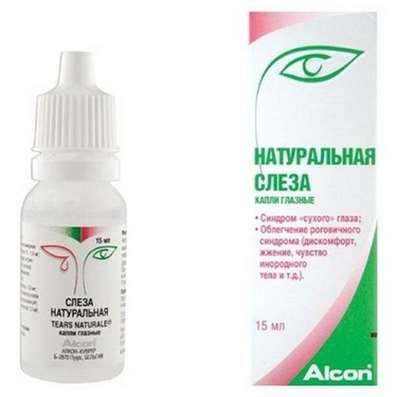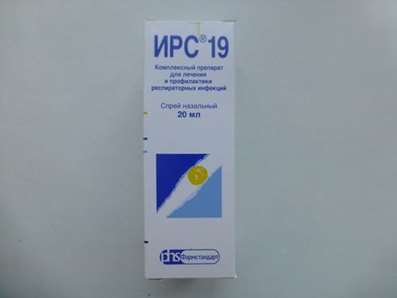Instruction for use: Propranolol Nycomed
I want this, give me price
Trade name of the drug – Propranolol Nycomed
Dosage Form: tablets
Active substance:Propranololum
ATX
C07AA05 Propranolol
Pharmacotherapeutic group: Beta-blockers
The nosological classification (ICD-10)
C74 Malignant neoplasm of adrenal gland: Glyukosteroma; corticosteroma; inoperable corticosteroma; Tumors of the adrenal gland
E05 Thyrotoxicosis [hyperthyroidism]: Von Basedow's disease; Basedow's disease; hyperthyroidism; Goitre diffuse toxic; Increased thyroid function; tireotoksicski reaction; Toxic diffuse goiter; Toxic goiter; Enlargement of the thyroid gland with symptoms of hyperthyroidism; The phenomenon of iodine Basedow
G43 Migraine: The pain of migraine; Migraine; hemiplegic migraine; Migraine headache; A migraine attack; Continuous headache; hemicranias
I10 Essential (primary) hypertension: hypertension; Arterial hypertension; Arterial hypertension crisis course; Essential Hypertension; Essential hypertension; Essential hypertension; Essential hypertension; Essential hypertension; Primary hypertension; Arterial hypertension, complications of diabetes; The sudden increase in blood pressure; Hypertensive disorders of blood circulation; hypertensive condition; hypertensive crises; arterial Hypertension; malignant Hypertension; Hypertonic disease; hypertensive crises; accelerated hypertension; malignant hypertension; The aggravation of hypertensive disease; Transient hypertension; Isolated systolic hypertension
I15 Secondary hypertension: Arterial hypertension, complications of diabetes; hypertension; The sudden increase in blood pressure; Hypertensive disorders of blood circulation; hypertensive condition; hypertensive crises; hypertension; arterial Hypertension; malignant Hypertension; hypertensive crises; accelerated hypertension; malignant hypertension; The aggravation of hypertensive disease; Transient hypertension; hypertension; Arterial hypertension; Arterial hypertension crisis course; renovascular hypertension; Hypertension symptomatic; Renal hypertension; Renovascular hypertension; renovascular hypertension; Symptomatic hypertension
I25 Chronic ischemic heart disease: Coronary heart disease on the background of hypercholesterolemia; Coronary heart disease is a chronic; Coronary heart disease; Stable coronary artery disease; Percutaneous transluminal angioplasty; Myocardial ischemia, arteriosclerosis; Recurrent myocardial ischemia
I47.1 Supraventricular tachycardia: Supraventricular paroxysmal tachycardia; supraventricular tachyarrhythmia; supraventricular tachycardia; Supraventricular arrhythmias; Supraventricular paroxysmal tachycardia; supraventricular tachyarrhythmias; supraventricular tachycardia; Neurogenic sinus tachycardia; orthodromic tachycardia; Paroxysmal supraventricular tachycardia; Paroxysm of supraventricular tachycardia; Paroxysm of supraventricular tachycardia with WPW-syndrome; Paroxysm of atrial tachycardia; Paroxysmal supraventricular tachyarrhythmia; Paroxysmal supraventricular tachycardia; Politopnye atrial tachycardia; Atrial fibrillation; Atrial tachycardia is true; Atrial tachycardia; Atrial tachycardia with AV block; reperfusion arrhythmias; Reflex Bertsolda-Jarisch; Recurrent sustained supraventricular paroxysmal tachycardia; Symptomatic ventricular tachycardia; Sinus tachycardia; Supraventricular paroxysmal tachycardia; supraventricular tachyarrhythmia; supraventricular tachycardia; supraventricular arrhythmia; supraventricular arrhythmias; Tachycardia of AV connections; supraventricular tachycardia; Tachycardia orthodromic; sinus tachycardia; The nodal tachycardia; Chaotic atrial tachycardia politopnye; Wolff-Parkinson-White
I47.2 Ventricular tachycardia: Torsades de pointes (torsade de pointes); Symptomatic ventricular tachycardia; Torsades de pointes in myocardial infarction; Ventricular fibrillation; Ventricular tachycardia; Ventricular tachyarrhythmias; Ventricular tachycardia; ventricular Tachycardia; Life-threatening ventricular arrhythmias; Sustained ventricular tachycardia; Sustained monomorphic ventricular tachycardia; Paroxysmal ventricular tachycardia torsades; Paroxysmal ventricular tachycardia
Composition (per tablet):
1 tablet contains propranolol hydrochloride, 10, 40, or 80 mg, in multiples of 50 pcs.
Pharmacological Properties of Propranolol Nycomed
Pharmachologic effect - antianginal, hypotensive, anti-arrhythmic.
Beta-adrenoceptor blocking.
Pharmacokinetics
Metabolized during passage through the liver with the formation of active metabolites. Provided kidneys. propranolol half-life period in blood plasma is 3-6 hours.
Indications of Propranolol Nycomed
Hypertension, supraventricular and ventricular tachyarrhythmias, ischemic heart disease, migraine (prevention), thyrotoxicosis, pheochromocytoma.
Contraindications
Bronchial asthma and chronic obstructive pulmonary disease, cardiovascular insufficiency, sinoatrial and AV block, bradycardia, hypotension, cardiogenic shock, anesthesia drugs, depressing myocardial function (ether), Raynaud's syndrome.
Pregnancy and breast-feeding
Only under strict indications.
Side effect
Fatigue, dizziness, muscle weakness, decreased performance, insomnia, depression, nausea, bradycardia, AV block, cardiac failure, hypotension, cold hands and feet (peripheral vasoconstriction), hypoglycemia, thrombocytopenia and agranulocytosis, bronchospasm, skin rash, withdrawal syndrome ( headache, sweating, tachycardia and angina).
Interaction
Mutual inhibition of metabolism of chlorpromazine with the development of hypotension and other inherent aminazinu effects. Simultaneous administration of theophylline and slows down its metabolism results in increased concentrations of theophylline in the blood plasma.
Dosage and Administration
In hypertension, 40 mg 2 times a day. The dose can be increased to 2-4 weeks to 80-160 mg 2 times a day. When tachyarrhythmia adults 10-30 mg 3-4 times a day, children 0.2-0.4 mg / kg body weight per day (3-4 hours). For the prevention of angina, 20 mg 4 times a day. The dose may be increased within 1 week to 40 mg four times a day, or even up to 80 mg 2-3 times a day. For the prevention of post-myocardial infarction 40 mg three times a day, the dose can be gradually increased up to 80 mg three times a day. For migraine prophylaxis adult first 40 mg 2 times a day, then increase the dose usually about 2.3 to 80 mg twice a day; children 1.5-2 mg / kg body weight per day (3-4 hours). When thyrotoxicosis on 10-40 mg 3-4 times a day. In the treatment of pheochromocytoma should first and simultaneously with beta-blockers administered alpha-blockers.
Overdose
It is characterized by bradycardia, hypotension, loss of consciousness, seizures may develop. Treatment: respiratory failure therapy, atropine / in (1-3 mg) of beta-agonists (isoprenaline, dobutamine), electrical stimulation in severe bradycardia.
Precautionary measures
Gently apply for claudication and diabetes.
Storage conditions of Propranolol Nycomed
At room temperature.
Keep out of the reach of children.
Shelf life
5 years.
Do not use beyond the expiration date printed on the package.

 Cart
Cart





